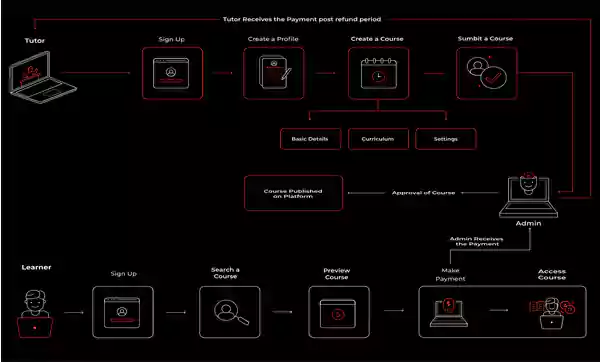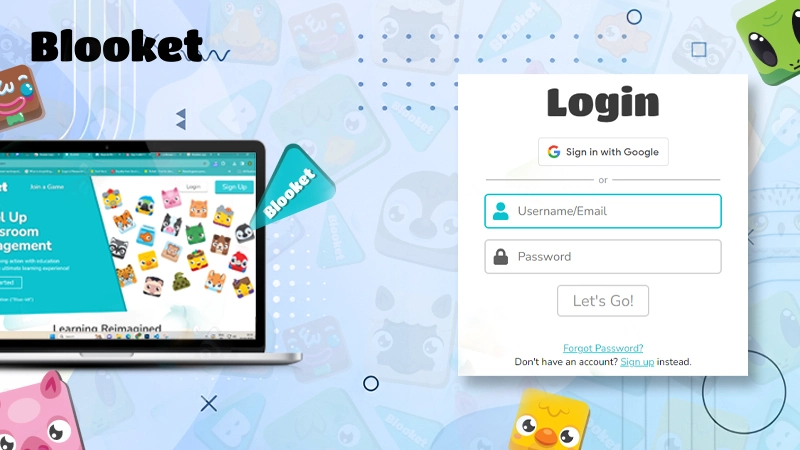How to Make an Online Learning Website Like Udemy?
Online education is no longer a trend, it has become a necessity, especially during the COVID-19 pandemic, where education has shifted online. Even before the pandemic, online education had gone beyond being a standard practice in higher education and corporate training. Not only that, but the growing cost of colleges and institutions has forced people to look for different alternatives.
That’s why e-learning marketplaces like Udemy, Skillshare, and Coursera attract millions of learners. As of May 2021, Udemy had 40 million learners supported by over 56k educators. Not just that, Udemy’s services are recognized by Fortune 100 companies’ with above 80% of them acknowledging the skills of their employees gained from Udemy courses.
The rising popularity and demand for these websites make them a great idea for your business. So if you want to create an e-learning website, this article is just for you! We’ll tell you how to create an online learning platform like Udemy.

How Udemy Works?
Before getting into the technical stuff, let’s first know how exactly Udemy works and what’s there that attracts so many students to this e-learning platform.
The interface of Udemy is quite simple, almost anyone can use it efficiently.
- Users can register themselves on the platform as a teacher or a student.
- The teacher will create the online courses and the students can buy those courses.
- As soon as someone buys the course, the payment is sent to the teacher after the deduction of the Udemy commission.
- The website also provides a course completion certificate on the platform itself.

Reasons to Choose Udemy as a Model for Your E-learning Website
From an intuitive UI to student and tutor-friendly features, Udemy has a wide range of features that is more than enough to satisfy the diverse needs of users.
Some of the best features of Udemy make it arguably the best e-learning marketplace.
- The user-friendly and responsive interface suits all screen sizes.
- Tutor-friendly course management features.
- Multiple platform compatibility for easy learning across all platforms.
- Different payment choices for easy and simple payment.
- Features to create rich multimedia content.
- Course completion certificates.
- Interactive, engaging, and other gamification features keep the learners interested and engaged.
- Users can request a refund within 30 days if not satisfied with the services.

Steps to Build an E-learning Website like Udemy
While platforms like Udemy are enjoying incredible growth, there is still space in the Edutech market for ambitious online tutoring start-ups. Here is a step-by-step guide to creating a website like Udemy.
Conduct a Thorough Market Analysis
Perform thorough market research to gather valuable insights that will help you make informed decisions. A market analysis also helps to identify your target audience, their behavior, attitude, and, most significantly, their pain points.
Choosing a Niche
Some e-learning platforms cover a broad spectrum of topics, but you can choose to start with a specific niche or a few niches when starting out. Therefore, deciding your niche according to your learners’ demographic is important. As your online e-learning platform grows, you can add as many topics as you wish to offer. Make sure you divide your courses into different categories.
Select the Business Model to Power Your E-learning Platform
Deciding a business model is significant as it determines not only how you generate revenue through your e-learning platform but also your features and offerings.
Here are probable business models you can adopt for your e-learning website.
- Paid Certificates – You can create tie-ups with reputed educational organizations and universities to provide learners with verified paid certificates to ensure that you receive a continuous flow of money.
- Subscription-based – With this business model, learners buy paid subscriptions to access the e-learning platform monthly or yearly.
- Affiliate Model – When learners follow the link you place on your website to make a purchase, your e-learning platform will receive a share of it.
- Corporate Collaboration – Tie up with corporates to provide corporate training to employees with specific courses related to their business operations.
- Paid Courses – When the learners buy a paid course, a share of the revenue goes to the course creator, and the rest goes to the e-learning platform owner.
Core Features to Implement
The main features of your e-learning platform are going to determine its success. Carefully choose the right features of your website to implement the top-notch functionalities to your platform.
Here are some of the core features you can consider integrating.
- Account creation – Account creation is an important feature that helps your users create their own accounts on your e-learning website to personalize their user experience.
- Profile management – After creating an account on the e-learning platform, they must be allowed to manage user information, add, modify, or remove the courses, follow instructors, and manage the certificates.
- Search and filters – With many courses available on the e-learning platforms, students will need a feature that allows them to find their desired courses. Integrate search, categorize, and filter features.
- Recommendations – Add this feature to show users relevant courses similar to the courses they have already enrolled for.
- Course Creation – Integrate course creation and updating features to allow instructors to create courses based on their skills and expertise.
- Dashboard – The dashboard is another significant feature that allows instructors to keep track of the courses they have uploaded on the eLearning site. It also displays the number of learners enrolled for their courses, the revenue generated, and an overall insight into all the activities on the website.
- Multiple Payment Options – Add easy and secure multiple payment options for users to buy paid courses. Consider offering payment solutions that are popular in your local market.
- Notifications – It is important to keep your learners informed about the updates of new courses and changes in existing ones. While notifications are essential, never overuse them.
- Admin Panel – Another significant feature allows you to manage all users’ accounts, content, revenue earned, and more.
- Reviews and Ratings – Reviews and ratings are valuable features that allow your learners to share their opinions about the online course. Course creators can also ask for reviews and ratings from learners once they have completed the course.
Building your Udemy-like eLearning Website
When it comes to building your Udemy clone, the easiest way is to use an Udemy clone. Pinlearn is one such Udemy clone script that allows entrepreneurs to create a powerful e-learning marketplace with the industry’s best features, revenue options, and a lot more. It is a ready-made script that allows a high level of customization with all essential features for selling courses on online learning platforms.

Conclusion
Today’s learners are turning towards eLearning marketplaces to enhance their skill sets or even pursue higher education. Considering the trend, building an online learning platform like Udemy is a lucrative business idea. Not only will it help you to help those who need skill training or specific education, but it will also be beneficial for you.
Recommended Read – What is Trader AI and How Does it Work?
FAQ
Ans: Udemy is an online learning platform that offers different courses that are both free and paid.
Ans: Instructors get 30% when a student buys a course, and Udemy gets 70% of the income.
Ans: Exhibition stands are very significant as they represent your brand and attract potential customers. A good stand can spread awareness about your business and give you new clients.
Blooket Login: Ultimate Guide to Login and Gameplay
10 Fastest Growing Tech Jobs in 2024
Justice: How Technology Transforms Asbestos Lawsuits
5 Quick Steps to Start Your Digital Banking…
Online Interior Design Courses: A Sustainable Choice for…
Private Tutor vs Teacher: What’s the Difference?
Challenges and Opportunities in Implementing 5G Technology in…
Top 10 Common Essay Writing Mistakes and How…
E-Learning Trends to Watch in the Coming Years
Incorporating Research into Your Essays: A Guide to…
The College Student’s Guide to Coping with Stressors












